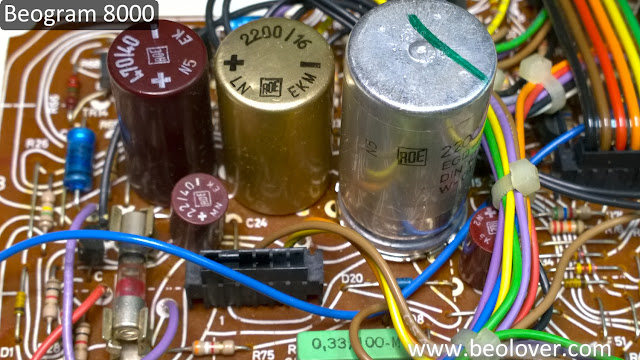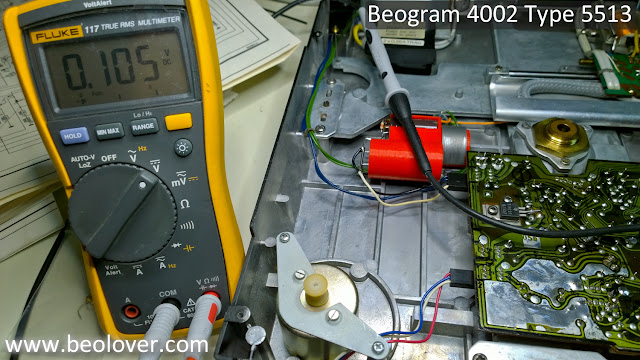The first step of the restoration of the Beogram 4000 that is currently on my bench was to rebuild the arm lowering and tracking mechanisms. This shows the solenoid and the damper that take care of timely and gracefully lowering the arm onto the record:
I removed all the components for cleaning and lubrication:
After reinstalling everything it was time to look after the linkage that connects the damper plunger with the tonearm. It is hidden away on the side of the sensor arm, which needs to be removed to be able to lubricate the pivot point of the linkage:
this shows the linkage removed:
After reassembling everything it was time to adjust the parallelism of the arms. The base of the sensor arm needs to be orthogonal to the carriage rods, and then the sensor arm needs to be parallel to the base. Once that is established, the tonearm needs to be adjusted to be parallel to the sensor arm:
The next step was to replace the incandescent bulb in the tracking sensor with a Beolover LED replacement fixture. This shows the original light source in place:
and removed,
which reveals the aperture that controls the feedback loop to the carriage servo motor. The LED replacement is composed of a circuit board and a 3D printed housing that replicates the original lamp housing:
The LED is in the spot where the filament of the light bulb normally resides:
This shows the LED assembly installed:
The final step was to clean the threaded rod that drives the carriage and to install a new aluminum pulley provided by Nick (send an email if you want to get one for your Beogram - I'll be happy to get you in touch!). This shows the original plastic pulley:
and this is the awesome new aluminum pulley!:
Beolovely! On to rebuilding the keypad!













































